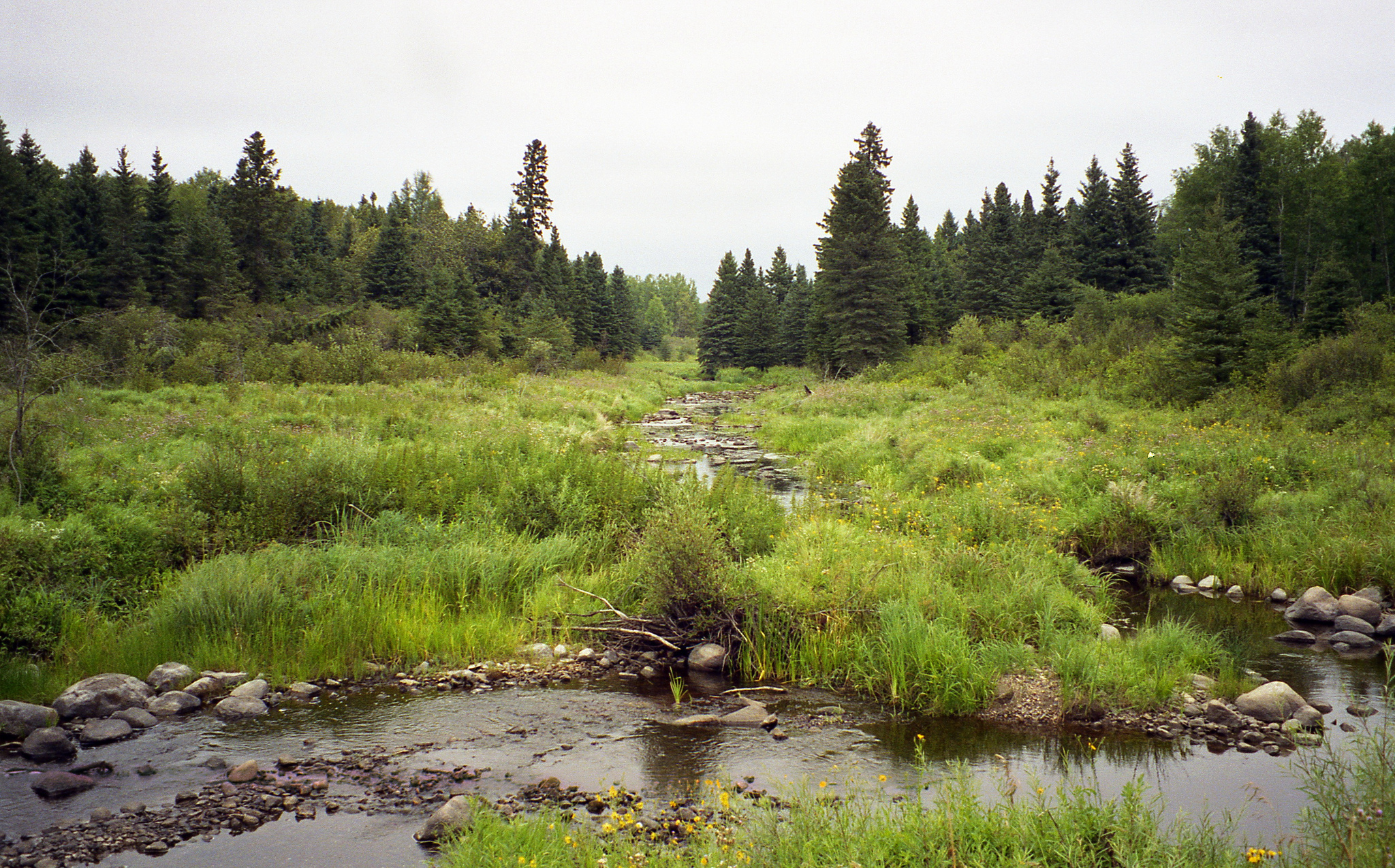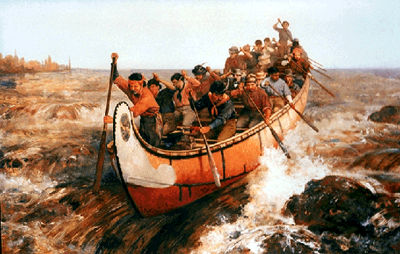Article
Biomass Energy
Biomass energy, or bioenergy, is the energy stored in biomass — that is, nonfossil organic materials such as wood, straw, vegetable oils and wastes from forestry, agriculture and industry, as well as municipal solid waste.

Enter your search term
Signing up enhances your TCE experience with the ability to save items to your personal reading list, and access the interactive map.
Create AccountArticle
Biomass energy, or bioenergy, is the energy stored in biomass — that is, nonfossil organic materials such as wood, straw, vegetable oils and wastes from forestry, agriculture and industry, as well as municipal solid waste.
"https://www.thecanadianencyclopedia.ca/images/tce_placeholder.jpg?v=e9dca980c9bdb3aa11e832e7ea94f5d9" // resources/views/front/categories/view.blade.phphttps://www.thecanadianencyclopedia.ca/images/tce_placeholder.jpg?v=e9dca980c9bdb3aa11e832e7ea94f5d9

Article
BIONESS (Bedford Institute of Oceanography Net and Environmental Sampling System) is a multiple-net sampler for ZOOPLANKTON and micronekton (pelagic animals 1-10 cm in length). It uses a new design concept, with nets arranged horizontally rather than vertically, as in earlier multiple-net samplers.
"https://www.thecanadianencyclopedia.ca/images/tce_placeholder.jpg?v=e9dca980c9bdb3aa11e832e7ea94f5d9" // resources/views/front/categories/view.blade.phphttps://www.thecanadianencyclopedia.ca/images/tce_placeholder.jpg?v=e9dca980c9bdb3aa11e832e7ea94f5d9

Article
A biosphere reserve represents one of the world’s important ecosystems and is divided into three zones: a protected core zone (such as a park or wildlife area), a buffer zone around the core, and a transition zone that fosters sustainable economic and cultural activity. The World Network of Biosphere Reserves includes 686 sites around the world, 18 of which are in Canada. The network is part of the larger Man and the Biosphere Program of the United Nations Educational, Scientific and Cultural Organization (UNESCO). Biosphere reserves are designated by UNESCO to help conserve biodiversity, demonstrate sustainable development and build the local community’s capacity to deal with human and environmental issues.
"https://d3d0lqu00lnqvz.cloudfront.net/media/media/0b4a5b26-9047-48ec-97c2-3490843a5b3f.jpg" // resources/views/front/categories/view.blade.phphttps://d3d0lqu00lnqvz.cloudfront.net/media/media/0b4a5b26-9047-48ec-97c2-3490843a5b3f.jpg

Article
Biotechnology was defined by the 1981 Federal Task Force on Biotechnology (Brossard Committee) as the "utilization of biological processes, be they microbial, plant, animal cells or their constituents, for the provision of goods and services.
"https://www.thecanadianencyclopedia.ca/images/tce_placeholder.jpg?v=e9dca980c9bdb3aa11e832e7ea94f5d9" // resources/views/front/categories/view.blade.phphttps://www.thecanadianencyclopedia.ca/images/tce_placeholder.jpg?v=e9dca980c9bdb3aa11e832e7ea94f5d9

Article
The birchbark canoe was the principal means of water transportation for Indigenous peoples of the Eastern Woodlands, and later voyageurs, who used it extensively in the fur trade in Canada. Light and maneuverable, birchbark canoes were perfectly adapted to summer travel through the network of shallow streams, ponds, lakes and swift rivers of the Canadian Shield. As the fur trade declined in the 19th century, the canoe became more of a recreational vehicle. Though most canoes are no longer constructed of birchbark, its enduring historical legacy and its popularity as a pleasure craft have made it a Canadian cultural icon.
"https://d3d0lqu00lnqvz.cloudfront.net/media/media/50d0c290-345d-4655-b501-3cfa471dfdb7.jpg" // resources/views/front/categories/view.blade.phphttps://d3d0lqu00lnqvz.cloudfront.net/media/media/50d0c290-345d-4655-b501-3cfa471dfdb7.jpg

Article
Birth control means the deliberate prevention of conception and pregnancy. The birth control methods used in Canada range from the simplest (like abstinence) to the most complex (like male or female surgical sterilization). (See also History of Birth Control in Canada.)
"https://d3d0lqu00lnqvz.cloudfront.net/media/media/60b165c0-eff9-4770-b2b7-5d78d3be5fe0.jpg" // resources/views/front/categories/view.blade.phphttps://d3d0lqu00lnqvz.cloudfront.net/media/media/60b165c0-eff9-4770-b2b7-5d78d3be5fe0.jpg

Article
Childbirth is the beginning of a child’s life and a powerful rite of passage for the mother. Methods vary according to culture and time periods. Before the 19th century, Canadians relied mostly on the help of midwives, as well as prayers and even superstitions, to face the intense pains of contractions. Advances in the field of obstetrics in the 19th and 20th centuries introduced new ways of shortening the length of childbirth and managing its pains. Those developments also resulted in the transition of childbirth from homes to hospitals. Today, the different methods of childbirth can involve the help of physicians, midwives and doulas.
"https://d3d0lqu00lnqvz.cloudfront.net/media/new_article_images/ChildbirthinCanada/Childbirth_class.jpg" // resources/views/front/categories/view.blade.phphttps://d3d0lqu00lnqvz.cloudfront.net/media/new_article_images/ChildbirthinCanada/Childbirth_class.jpg

Macleans
"IT'S THE CRIME of the century," 82-year-old Len Greenall says, his voice rising in passionate indignation. "It's an immoral invasion of bodily privacy." He's sitting at the dining room table of his Surrey, B.C.This article was originally published in Maclean's Magazine on November 25, 2002
"https://www.thecanadianencyclopedia.ca/images/tce_placeholder.jpg?v=e9dca980c9bdb3aa11e832e7ea94f5d9" // resources/views/front/categories/view.blade.phphttps://www.thecanadianencyclopedia.ca/images/tce_placeholder.jpg?v=e9dca980c9bdb3aa11e832e7ea94f5d9

Article
One of the easiest ways to understand bitumen is to compare it to its cousin, conventional crude oil. Whereas conventional crude oil flows freely, bitumen does not. At room temperature it looks like cold molasses, and must be either heated or diluted before it flows.
"https://d3d0lqu00lnqvz.cloudfront.net/media/media/5b3c7c5d-d083-4c67-9b18-611af4e00f75.jpg" // resources/views/front/categories/view.blade.phphttps://d3d0lqu00lnqvz.cloudfront.net/media/media/5b3c7c5d-d083-4c67-9b18-611af4e00f75.jpg

Article
A black hole is an object in outer space whose the gravitational field is so strong that no matter or light can escape. Astronomers believe such regions can form from the collapse of massive stars. Researchers at Canadian institutions have contributed to theories supporting the existence of black holes.
"https://d3d0lqu00lnqvz.cloudfront.net/media/new_article_images/M87 black hole.jpg" // resources/views/front/categories/view.blade.phphttps://d3d0lqu00lnqvz.cloudfront.net/media/new_article_images/M87 black hole.jpg

Macleans
THERE are few things as mournful as a darkened, silent midway. So when the Canadian National Exhibition opened last week, Toronto as a whole took heart. The historic Aug.This article was originally published in Maclean's Magazine on September 1, 2003
"https://www.thecanadianencyclopedia.ca/images/tce_placeholder.jpg?v=e9dca980c9bdb3aa11e832e7ea94f5d9" // resources/views/front/categories/view.blade.phphttps://www.thecanadianencyclopedia.ca/images/tce_placeholder.jpg?v=e9dca980c9bdb3aa11e832e7ea94f5d9

Macleans
This article was originally published in Maclean’s magazine on August 25, 2003. Partner content is not updated. IT TOOK just nine seconds to turn the clock back a century. A voltage fluctuation in some Ohio transmission lines. Then, at 4:11 p.m. n a muggy August Thursday, a faster-than-you-can-blink reversal in the flow of current, suddenly sucking away a city's worth of power from the eastern half of the continent.
"https://www.thecanadianencyclopedia.ca/images/tce_placeholder.jpg?v=e9dca980c9bdb3aa11e832e7ea94f5d9" // resources/views/front/categories/view.blade.phphttps://www.thecanadianencyclopedia.ca/images/tce_placeholder.jpg?v=e9dca980c9bdb3aa11e832e7ea94f5d9

Article
All these workers practised a technology that came from the great French craft tradition; their highly skilled art derived from trade guild knowledge, instruction and scientific treatises.
"https://d3d0lqu00lnqvz.cloudfront.net/media/media/1e459b6f-fe80-4090-8780-016a87e863bd.jpg" // resources/views/front/categories/view.blade.phphttps://d3d0lqu00lnqvz.cloudfront.net/media/media/1e459b6f-fe80-4090-8780-016a87e863bd.jpg

Article
There are approximately 836,000 visually impaired Canadians, although only a small number of them have been blind from birth.
"https://www.thecanadianencyclopedia.ca/images/tce_placeholder.jpg?v=e9dca980c9bdb3aa11e832e7ea94f5d9" // resources/views/front/categories/view.blade.phphttps://www.thecanadianencyclopedia.ca/images/tce_placeholder.jpg?v=e9dca980c9bdb3aa11e832e7ea94f5d9

Article
In Canada the largest agency serving blind and visually impaired persons is The Canadian National Institute for the Blind. CNIB has 9 geographic service divisions with over 60 regional offices, and the CNIB Library for the Blind serves all areas of Canada.
"https://www.thecanadianencyclopedia.ca/images/tce_placeholder.jpg?v=e9dca980c9bdb3aa11e832e7ea94f5d9" // resources/views/front/categories/view.blade.phphttps://www.thecanadianencyclopedia.ca/images/tce_placeholder.jpg?v=e9dca980c9bdb3aa11e832e7ea94f5d9
